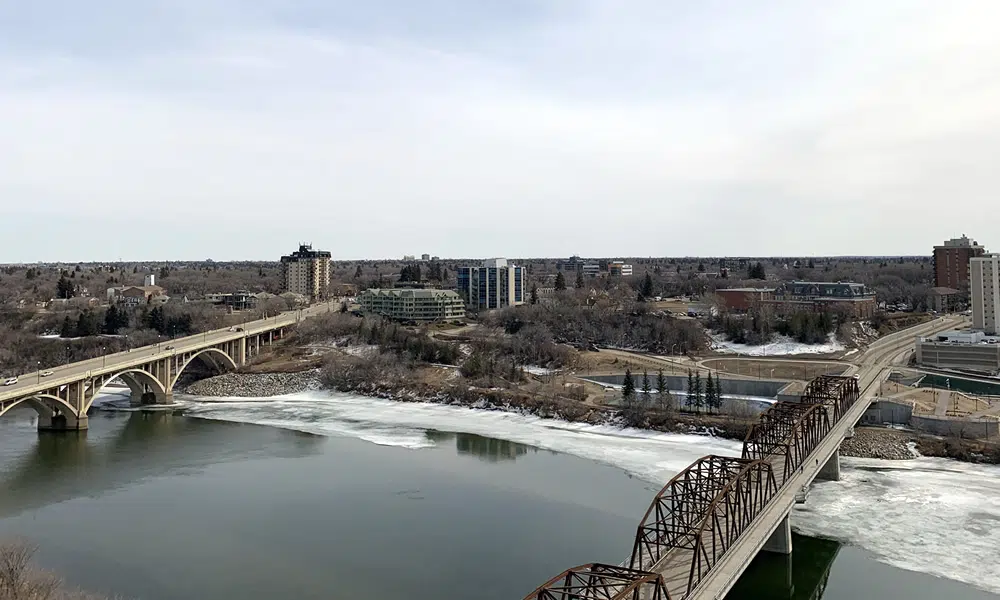A collaboration of international minds, including experts in Saskatchewan, have created the most advanced snow modelling in the world. Dr. John Pomeroy, a professor at the University of Saskatchewan and Canada Research Chair in Water Resources and Climate Change, says this is something they think is important for Saskatchewan and western Canada. He says it’s also valuable for Alberta and the west side of the Rockies going into British Columbia and then the Columbia River down into the Pacific Northwest.
Dr. Pomeroy says 99 per cent of the flow in the South Saskatchewan River comes from Alberta, “And the lion’s share of that is coming out of the mountain snowpack. And so getting better predictions on that can help us better predict the water availability for irrigation, the chances of flooding, water supply for various uses for the City and for potash mines and for other uses we have in Saskatchewan.”
The Canadian Hydrological Model is run on supercomputers taking detailed data on snow distribution by wind and avalanches, shading by mountains, wind flow over ridges, and vegetation along with weather forecasts, in order to generate an estimate of where and how much snow has accumulated. Dr. Pomeroy says they have access to two super computers, one of which was created at the University of Saskatchewan called Copernicus. The Global Institute for Water Security and the Global Institute for Food Security share Copernicus. He says the computer code is something that was being developed dating back to the 1980s, initially used to calculate blowing snow over the prairies which established the effectiveness of stubble in trapping snow, and problems associated with summer fallow, as well as effectiveness of shelter belts.
He says for years they have been physically in the mountains taking measurements of snowpack. This model, he says, was derived from the PHD thesis of a University of Saskatchewan student, Chris Marsh. And when they were running into difficulties in their efforts to implement it over the Rockies, they brought in a visiting professor from the French Meteorological Snow Centre in Grenoble, France, Vincent Vionnet. They also used LiDAR which is light detection and ranging laser measurements taken from an airplane. Dr. Pomeroy says LiDAR is something they can only do a couple times a year because they can’t afford it. For Canadian applications, Canada is so large there is simply no way they could fly with a Cessna and a laser every few weeks to get the snow pack.
He says they are already running a test example that you can look up on the web and get a detailed snow forecast for the area west of Calgary into Banff National Park which he says allows people to plan their activities and might also be helpful in determining how much snow melt is coming down the Bow River headed for Saskatoon.
They have already proven they can run the model over BC, Alberta and parts of Saskatchewan, so the next application will be running the model over Canada and then the world. “We’ve been in discussions with UNESCO and the World Meteorlogical Organization, and they want to see revised global estimates of snow and ice. Of course, they’re declining due to climate change around the world and so a model like this can help us track that. And that’s where we’re headed with it,” said Dr. Pomeroy.
A model like the one that has been developed at the University of Saskatchewan was called for at a World Meteorlogical Organization Summit in 2019 which was attended by 44 countries from around the world. Dr. Pomeroy says the Canadian Hydrological Model was developed with Western Canada in mind and notes snow in the Canadian Rockies accounts for 60 per cent of the flow of the South Saskatchewan River.
He knows people also need this kind of model in Asia, India, China, the Andes and in the United States. The snowpack in the mountains controls the wildfire season and controls the amount of water in reservoirs and with the decline of snowpacks around the world, Dr. Pomeroy says it is important to track it more carefully.
Click here to listen to the interview, on CJWW’s In Conversation, in its entirety.


















